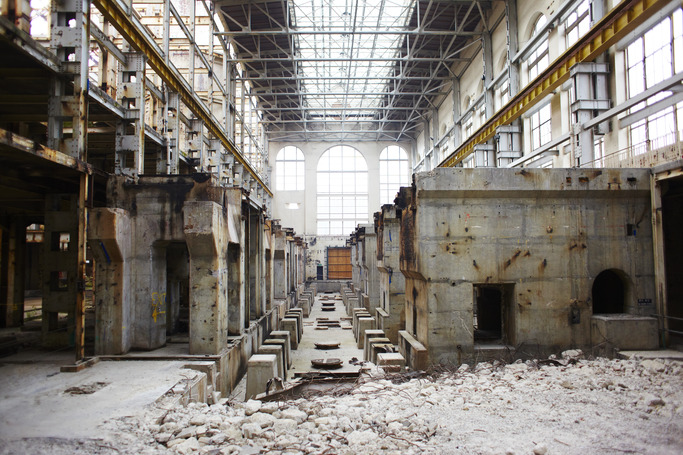The executive architect usually arrives after the publicity shots for a project gaining planning permission have been and gone – delivery is traditionally not seen as high profile. But Formation Architects thinks the industry needs to wake up to the value that collaboration on delivery can add to projects, and possibly rescue the reputation of design and build in the process.
There has been a growing disconnect between architects who design and those who build, suggests Formation Architects Director Kees van der Sande, and it seems to be getting wider.

The executive architect usually arrives after the publicity shots for a project gaining planning permission have been and gone – delivery is traditionally not seen as high profile. But Formation Architects thinks the industry needs to wake up to the value that collaboration on delivery can add to projects, and possibly rescue the reputation of design and build in the process.
There has been a growing disconnect between architects who design and those who build, suggests Formation Architects Director Kees van der Sande, and it seems to be getting wider.
Meanwhile the industry is almost being forced down the design and build route by a scarcity of contractors willing to tender for traditional contracting, along with a trend for more and more of the detailed design work assigned to the ‘contractor’s design portion’ (CDP) of the contract.
Formation Architects is almost 70-strong and has been a full-service, award winning design practice with a diverse spread of work for sixty years. Over the last ten years the practice has built up its design profile, its delivery service and reputation, and now gets called in by architects and interior designers to collaborate, by clients who have taken over a project with planning consent or see a project running into difficulties, and by contractors who will put their name forward because they know that the working drawings and information they will receive will make their own contract lower risk.
‘We are known as contractor-friendly, but it is because we know how buildings are put together,’ says van der Sande.
Collaborative working is seen as key to delivery. The practice’s preferred way of collaborating is from conception through to handover. Formation Architects are, for instance, currently working as lead designers delivering a high-profile project in Central London, designed by Seattle based architects Olson Kundig.
At the other end of the scale, the practice was recently interviewed by an architect and interior designer partnership who decided at the outset that they wanted to work with an executive architect to realise their vision, rather than take it on themselves.
Formation Architects has been refining its collaborative approach over the years. Key to the delivery aspect of its service is a construction information map that the practice has developed to break down the project information process to create failsafe checklists of information requirements and associated scheduling.
The practice has coherent systems in place across the office for the management of detailed design work, giving its architects more time to think about project-specific issues and solving problems.
The conventional argument these days is that poor buildings are the result of the contractor dumbing-down details and materials in the process. Formation Architect’s Directors argue that this ignores the increasing absence of designer input and collaboration with the contractor at the detailed design stage.
In commercial property development, there are developers who are only looking for planning permission and land value uplift, and developers taking on projects with consent who see their mission as delivering that project as cost-efficiently as possible. Delivery misses out in both situations, argues van der Sande.
He wants to see more clients embracing design and build by recognising that designing for delivery is a vital part of the development process.
‘The better-informed client realises that a small addition to the architect’s fee for better delivery, which is a very small percentage of the project cost, is a small price to pay for a higher quality building.’
Fellow Director Neil Farrance adds that it is the responsibility of the executive architect to understand what elements of the design are sacrosanct for the client. These might be anything from a critical detail to a particular functional or spatial requirement. These should be protected by a robust set of employer’s requirements, but the process of collaboration can still provide opportunities for efficiency gains with the supply chain.
He always challenges the common perception of value engineering, which he says should never be solely a search for cheaper, substitute materials and building elements, but rather an opportunity to make the original design more efficient.
It’s no surprise that Formation Architect’s Directors prefer being novated to contractors on design and build contracts, because that means their ongoing collaboration and input is assured.
But they also prefer an ‘open’ collaborative form of novation that allows them to maintain a dialogue with the Client on key issues and decisions.
Building a relationship of trust with contractors is crucial here to overcome contractor concerns over where the executive architect’s loyalties lie.
Formation Architects prefers two-stage tenders where possible, using the opportunity to refine the design with the contractor and in the process arrive at a more accurate cost price.
‘If you get it right and understand the benefits of collaboration between the designer and contractor, it’s an opportunity to get a project that is considerably better – it’s nothing to do with dumbing down,’ insists Farrance.
Thanks to Neil Farrance and Kees van der Sande, Directors, Formation Architects.
Text by Neal Morris. This is a Professional Feature edited by the RIBA Practice team. Send us your feedback and ideas
RIBA Core Curriculum Topic: Business, clients and services.
As part of the flexible RIBA CPD programme, Professional Features count as microlearning. See further information on the updated RIBA CPD Core Curriculum and on fulfilling your CPD requirements as an RIBA Chartered Member.
Posted on 17 May 2018.









